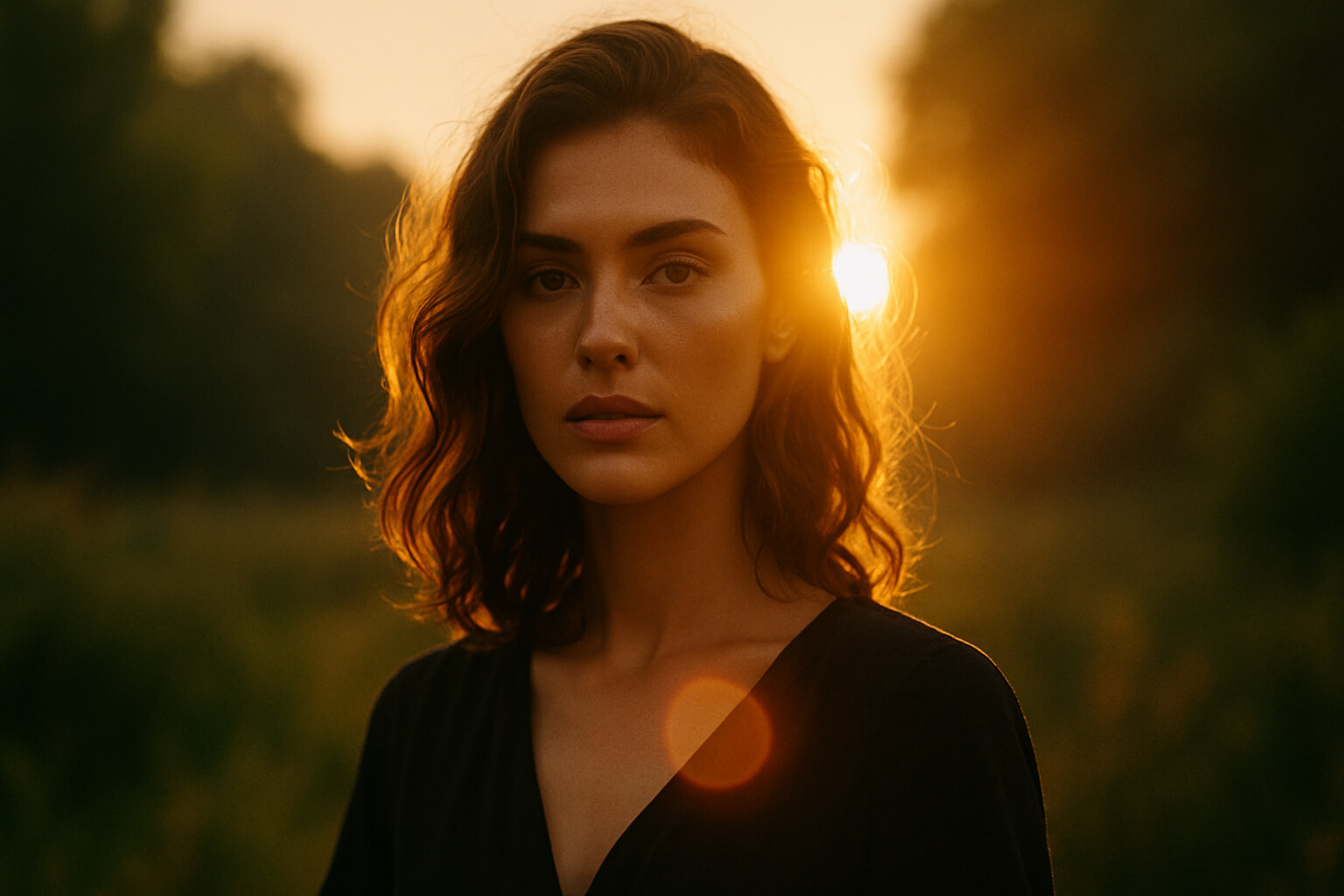June 07, 2025

Mastering the Art of Lens Flares in Photography: A Comprehensive Guide
Lens flares—once considered an unwanted flaw—have evolved into a creative asset for photographers. By embracing these light-induced artifacts, you can infuse your images with mood, depth, and dramatic energy. Whether you're shooting striking portraits, breathtaking landscapes, or experimental conceptual photography, using lens flares intentionally adds a unique touch to your work. This guide will teach you how to harness lens flares for creative impact, offering essential tips, settings, and techniques to elevate your photography.
Lens flare occurs when light enters the lens and scatters, creating visible artifacts like streaks, rings, starbursts, or subtle glows. These artifacts are not just a result of poor lighting conditions—they are an opportunity to create compelling visual elements that elevate the mood and atmosphere of your images. When used intentionally, lens flare can transform a mundane shot into something striking and atmospheric.
To understand how to manage and amplify lens flare, explore the intricacies of light interaction with your lens and camera sensor. For instance, direct lighting sources, such as the sun or artificial studio lights, play a huge role in creating flares. Learn how these elements can either enhance or detract from your shot, and how to make the most of them through proper settings. If you struggle with overexposure or washouts, consult guides on common mistakes in photography and how to avoid them.
Natural light, especially during golden hour, offers endless possibilities for creating stunning lens flares. When positioned correctly, sunlight can introduce warmth and softness to your photographs, making your images feel alive and full of character. Sun flares work particularly well in outdoor settings, such as portraits, street photography, and nature scenes.
To master sun flare photography, learn how to position the sun at the right angle, how to frame your subject, and how to manipulate the lens to create the desired flare effect. Golden hour, with its diffused light, is the perfect time to experiment with these techniques. For added flair, combine your knowledge of natural light usage with the skill of capturing light trails in photography to infuse motion into your flare shots. You can get a deeper understanding of creating beautiful sun flare effects in the article on how to create beautiful sun flare effects. Also, learn how to use natural light to refine your lighting skills and enhance flare usage.
Lens flares aren’t limited to natural light; artificial lighting also provides ample opportunities for flare experimentation. By positioning studio lights, streetlights, or other artificial light sources at strategic points in your scene, you can create beautifully controlled flares that enhance the mood of your shot. This technique is especially useful in fashion, conceptual, and studio photography.
Consider exploring creative lighting styles like Rembrandt or split lighting to craft multi-dimensional lighting effects. Pair these techniques with a deep understanding of color theory to experiment with color grading and correction, enhancing the emotional and visual impact of your lens flares. You can learn more about artificial lighting techniques in the beginner's guide to artificial lighting and understand key styles like Rembrandt lighting and split lighting.
To master lens flare, it’s essential to have the right equipment that allows for flexibility and control:
To fully utilize lens flares, incorporate them into your composition with intention:
Beyond these techniques, practice compositional guides that focus on contrast, framing, and dynamic range. As lens flare often leads to increased contrast, pairing it with strategic shadow and highlight management can make the flare feel even more impactful. Also, learn how to incorporate these elements into a cohesive photographic style that reflects your creative identity. Explore how to take professional-looking photos and learn how to use contrast in photography to enhance your flare shots.
Once you’ve mastered the art of using lens flares, it's time to incorporate them into your personal brand and share your work with the world. Building a distinct photographic style based around flares can set you apart in a crowded marketplace. Use social media platforms to showcase your unique flare shots and develop a following of like-minded enthusiasts and clients. Learn how to build a personal brand as a photographer with the guide on how to build a personal brand as a professional photographer and see which social media platforms for photographers are best suited for showcasing your work.
In addition to creating a signature style, take steps to monetize your work. Learn how to sell your images online through stock photography platforms or direct sales. If you plan to license your work, protecting your intellectual property is key. Understand how to add a copyright symbol to your photos to ensure your creations are legally protected. Explore the full details of how to sell photography online in 2025 and the best photo selling websites.
Lens flares are no longer just accidents—they are intentional storytelling tools that add depth, emotion, and atmosphere to your photos. Mastering lens flare requires not only technical knowledge but also creative experimentation. By playing with lighting, gear, composition, and editing, you can transform flares into powerful elements that define your photographic style. So, embrace the light, experiment with flares, and let them become a signature of your visual storytelling.
Stay up to date with the newest tips, gear reviews, and step-by-step guides to elevate your photography journey from home and beyond.